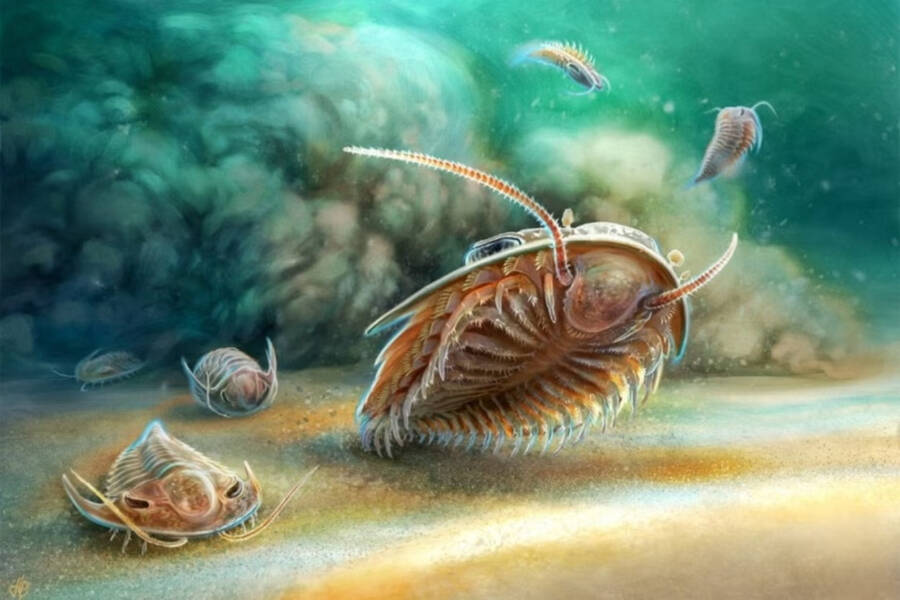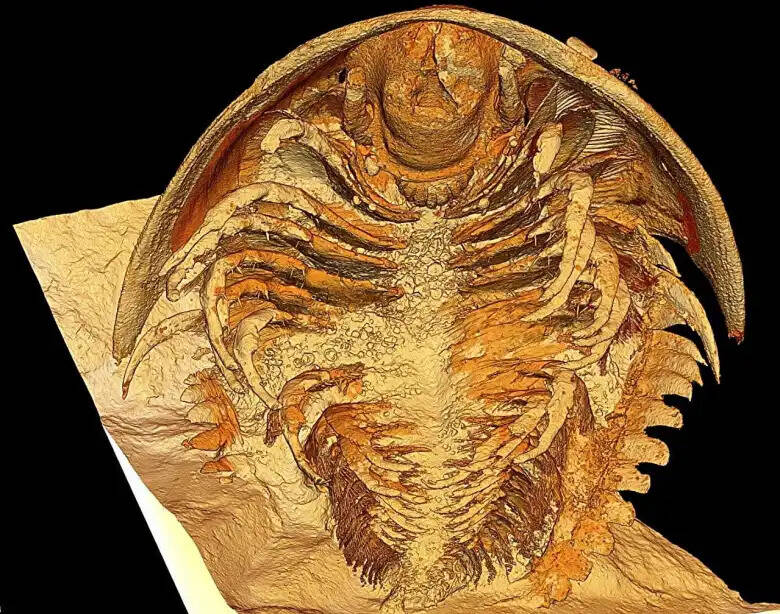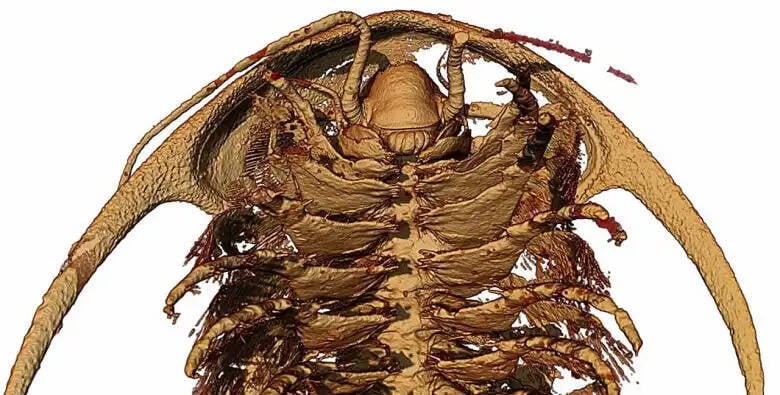The trilobites were preserved thanks to the volcanic ash they were buried in — and they've now been nicknamed the "Pompeii trilobites."

Prof. A. El Albani, Univ. PoitiersAn artistic reconstruction of trilobites trying to avoid volcanic ash 510 million years ago.
An international team of scientists led by Professor Abderrazak El Albani, a geologist at the University of Poitiers, recently discovered incredibly well-preserved trilobite fossils dating back over 500 million years.
Trilobites, now completely extinct, were arthropods that lived in the Earth’s oceans from the beginning of the Cambrian Period through most of the Paleozoic Era, surviving from 521 million years ago to 251 million years ago.
Professor El Albani and his team credit volcanic ash for preserving the trilobites. Their fossilization has preserved small details about their bodies and soft tissues, making this discovery instrumental for understanding how these creatures thrived millions of years ago.
Scientists In Morocco Unearth Pristine Fossils

Arnaud MAZURIER/IC2MP, Univ. PoitiersA microtomographic reconstruction of the trilobite Gigoutella mauretanica.
El Albani’s team made the incredible discovery while excavating the High Atlas mountain range of Morocco in 2019. There, experts unearthed remarkably well-preserved trilobite fossils from the Cambrian Period.
The team called the fossils “Pompeii trilobites,” in reference to the volcanic ash they were found preserved in. This ash apparently protected the fossils from millions of years of erosion and climate change.
Scientists believe that these trilobites perished shortly after a volcanic eruption. The combination of hot ash and sea water would have fossilized them quickly, even preserving their digestive tracts.
“Finding fossils in such a remarkable state of preservation within a volcanic environment was a profoundly exciting experience. I believe pyroclastic deposits should become new study targets due to their exceptional potential for preserving biological remains, including delicate soft tissues,” El Albani said, according to La Brújula Verde.
So far, experts have identified over 20,000 species of trilobites, making the trilobite one of the best-studied prehistoric marine animals. However, very few samples of the creatures’ soft tissues have survived, so this recent discovery has stirred a lot of excitement in the scientific community.
What Does This Discovery Mean For The Study Of Trilobites?

Arnaud MAZURIER/IC2MP, Univ. PoitiersA microtomographic reconstruction of the head and body of the trilobite Protolenus.
According to their published study, the researchers used CT scans, computer modeling, and X-rays to model the trilobites, and the results produced an incredibly detailed rendering of the prehistoric creatures.
“The computer work is pain-staking but it’s definitely been worth it. These trilobites look so alive, it’s almost as though they could crawl out of the rock,” co-author Harry Berks said in a press release from the University of Bristol.
The imaging, which took over five years to complete, revealed new features of the trilobites that scientists were previously unaware of, including specialized legs around the mouth and a fleshy lobe called a labrum.
Interestingly enough, there were also spoon-shaped curved bases on the mouth appendages, which may provide clues as to how these ancient arthropods ate.
“The head and body appendages had an inward-facing battery of dense spines like those of horseshoe crabs, manipulating and tearing prey or scavenged carcasses as they were moved forwards to the mouth. The mouth, a narrow slit behind a fleshy lobe called a labrum, known in living arthropods, has never been so clearly seen in a trilobite before,” Berks explained.
Now, researchers hope that future analysis of volcanic ash can provide more scientifically valuable information for the study of trilobites and other prehistoric creatures.
“The next step is to explore other comparable sites in Morocco and abroad to see if we can find something similar that can provide more details about the anatomy and evolution of organisms and life on Earth,” study author El Albani told All That’s Interesting in an email.
“No one expects to find fossils in volcanic rocks but our study shows that volcanic ash deposits are definitely worth a look. Who knows what secrets remain to be discovered in these understudied rocks?” co-author Philip Donoghue said.
After reading about these newly discovered trilobites, dive into the true story of Mary Anning, a fossil hunter who helped define the field of paleontology. Then, read about the Piltdown Man, the hoax that had the world believing we had finally found the missing link between ape and man.





